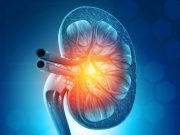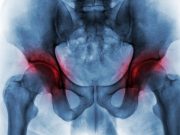9.6 Percent of Medical Visits Took Place Via Telehealth in 2021
Percentage of telehealth visits was higher for mental health than other clinicians
Emergency Inguinal Hernia Surgery Rates Increased With Lower Country Income
Increase in emergency surgery rates accompanied by increase in bowel resection; complications linked to emergency surgery and bowel resection
HTN, Albuminuria Risks No Worse for Kidney Donors Versus Nondonors
In a recent study, donors had initial drop in eGFR after nephrectomy, followed by lesser decline per year than nondonors
2007 to 2019 Saw Increase in Inflation-Adjusted Health Care Spending
From 2007 to 2019, medical burden increased from 23.5 to 26.4 percent for low-income families and from 5.4 to 6.5 percent for higher-income families
For Women With Obesity, Risk for Breast Cancer Drops After Bariatric Surgery
Surgical treatment benefit greatest in women with baseline insulin levels above the median
AACR Delivers Report on Disparities in Cancer Progress
Black and Indigenous individuals have higher overall cancer death rates, despite having lower cancer incidence rates
Anesthesia-Surgery Team Sex Diversity Linked to Improved Postop Outcomes
Hospitals with higher sex diversity (>35 percent female) had reduced odds of 90-day major morbidity
Worse Outcomes Seen for Severe Bilateral Hip OA in Adult Spinal Deformity
Patients with severe bilateral hip OA had worse sagittal vertebral axis measurement at one year
Robotic-Assisted Total Knee Arthroplasty Has Fewer Complications
Fewer complications seen compared with conventional total knee arthroplasty, but robotic-assisted procedure is more costly
Physicians With Disabilities May Experience Depersonalization
However, they are not more likely to experience emotional exhaustion



















